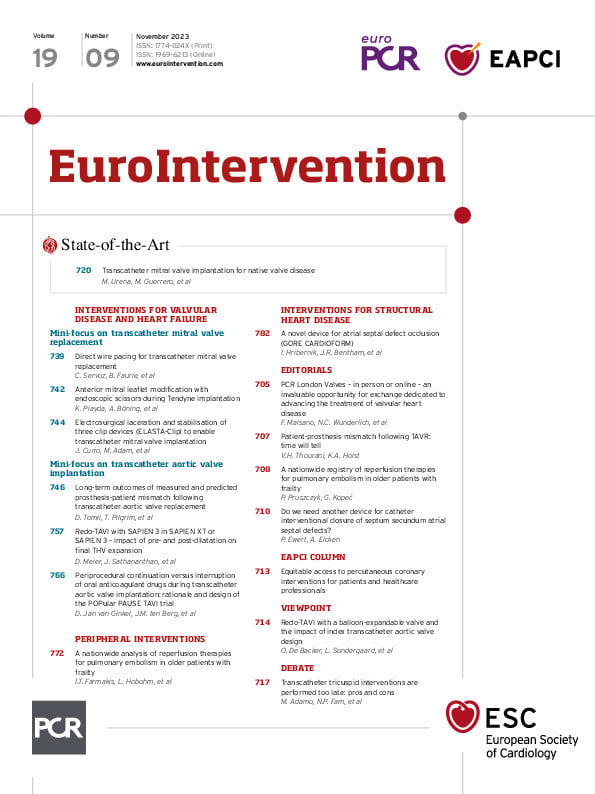Current guidelines of the European Society of Cardiology indicate that the optimal management of acute pulmonary embolism (PE) depends on the risk assessment of PE-related early mortality1. Reperfusion therapy, preferably systemic thrombolysis, is still recommended as the first-line treatment in haemodynamically unstable patients. It should also be considered as a rescue therapy when initially normotensive subjects deteriorate despite adequate anticoagulation1. However, real life shows that more than half of high-risk PE patients do not receive systemic thrombolysis because of increased risk of bleeding2. Since the rate of major extracranial bleeding reached 11.1% in patients above 75 years of age in the PEITHO study, advanced age and frailty are often regarded as relative contraindications for systemic thrombolysis3. In such cases, surgical embolectomy or catheter-directed therapy should be considered as a primary or rescue reperfusion1. However, surgical embolectomy is not usually immediately available. Thus, with growing clinical experience, catheter-directed therapies have become a real therapeutic option for PE patients4.
In this issue of EuroIntervention, Farmakis et al present the results of the US Nationwide Inpatient Sample from 2016 to 2020, including over 980,000 hospitalisations of PE patients aged ≥65 years (28.0% were frail)5. Reperfusion therapies were used in 4.9% of them, with an increase from 4.0% in 2016 up to 5.6% in 2020. Interestingly, the use of systemic thrombolysis and surgical embolectomy remained stable, while the application of percutaneous techniques almost doubled (from 1.7% to 3.2%). Although high-risk PE is a strong indication for urgent reperfusion therapy, such treatment was used only in 1 out of 6 haemodynamically unstable patients, with no significant increase over a 5-year period. Moreover, frailty additionally limited the utilisation of reperfusion therapy in elderly patients with high-risk PE. These observations indicate that the treatment of elderly high-risk PE patients definitively remains an Achilles’ heel in PE management and should be improved. Importantly, Farmakis et al give us some hints. Among frail high-risk patients, catheter-directed thrombolysis when compared to systemic thrombolysis was associated with reduced major bleeding (odds ratio [OR] 0.51, 95% confidence interval [CI]: 0.41-0.63) and even with a lower in-hospital mortality rate (OR 0.36; 95% CI: 0.28-0.46). Moreover, intracranial haemorrhage, which is the most feared and devastating complication of lytic treatment, occurred in only 1% of patients treated with percutaneous techniques, while in the group treated with systemic thrombolysis, it reached 3%. This indicates that catheter-directed therapies may be a safer option for elderly, frail PE patients requiring reperfusion and might even suggest that such therapies may be even more effective than systemic thrombolysis or surgical embolectomy.
Although the clinical evidence for the use of percutaneous techniques is rapidly increasing67, we need more high-quality evidence on catheter-based therapies performed with different devices in patients with different clinical characteristics including different PE risk categories. Moreover, local pulmonary embolism response teams should be established to guide the therapy for PE patients148. Luckily, the results of currently ongoing randomised trials on percutaneous therapies for PE are expected in 2024, helping to determine the specific groups that could benefit from the various techniques910.
Conflict of interest statement
The authors have no conflicts of interest to declare.

